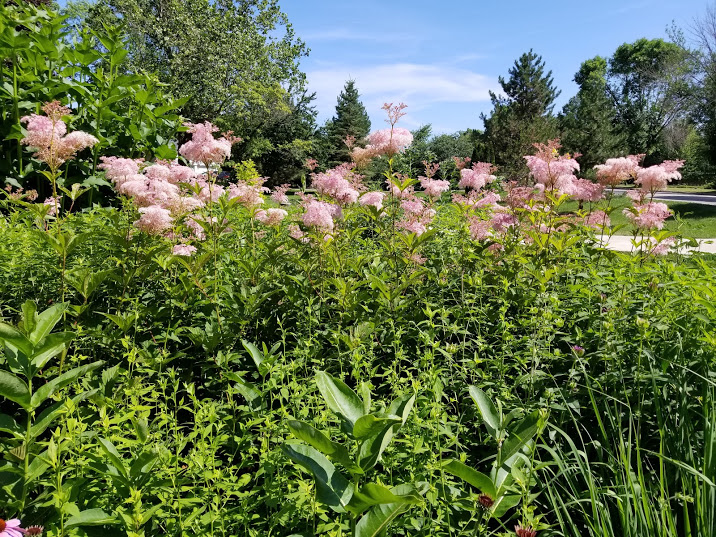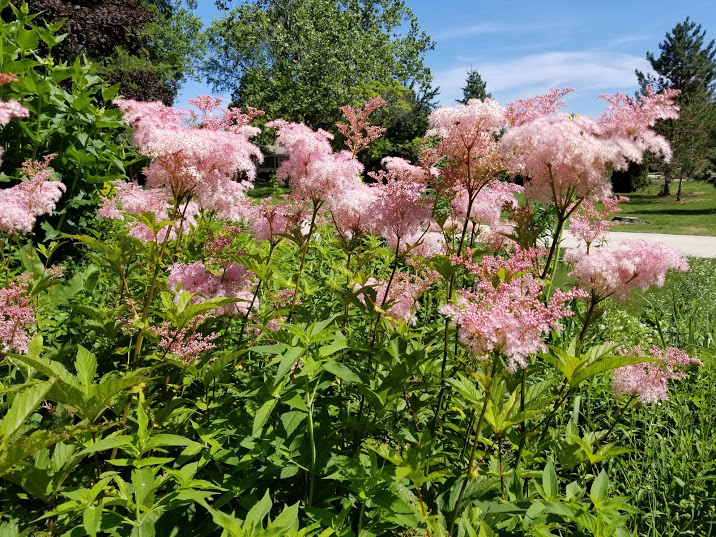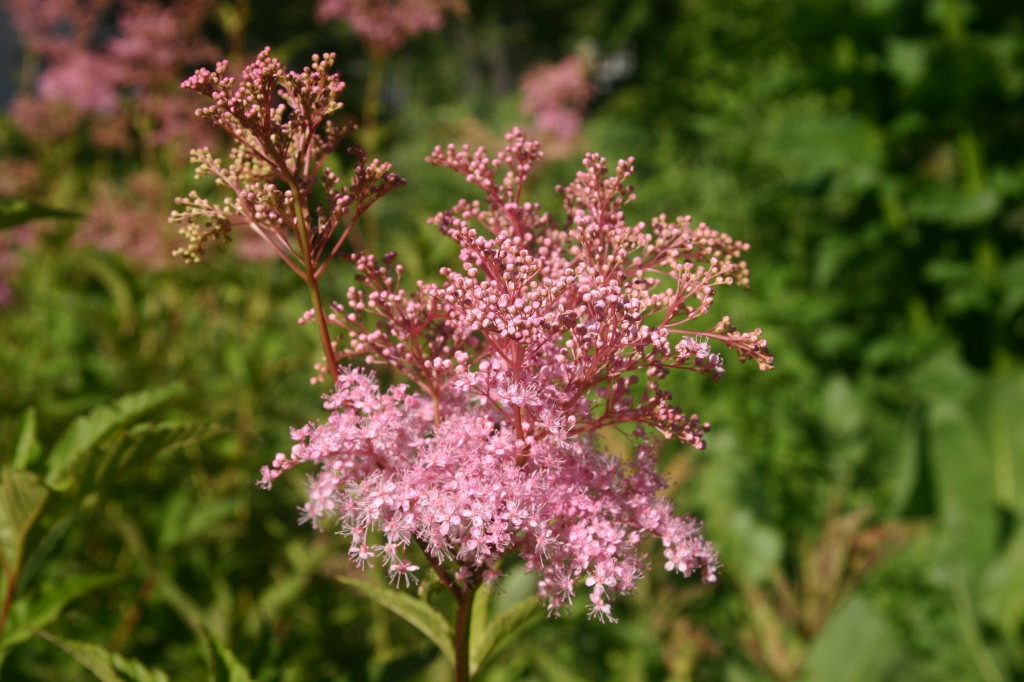It’s a matter of debate as to which plant would be considered the king of the prairie. My choice, selected for its huge thick leaves and towering flower scapes, would be Silphium terebinthinaceum, Prairie Dock. Others might choose its close relative Compass plant, Silphium laciniatum, or Snake plant, Eryngium yuccifolium. Still others might select one of the grasses that tickled the belly of the bison, Big Bluestem (Andropogon gerardii) or Indian Grass (Sorgastrum nutans). However, there is no debate as to who is the queen, for it’s in its name. Filipendula rubra is commonly known as Queen of the Prairie.
The genus Filipendula, frequently called meadowsweet, is in the rose family and consists of about 12 species. Plants of the genus prefer alkaline soil and moist conditions. The plant will suffer if subjected to drought conditions. Two of the species, Filipendula rubra and Filipendula ulmaria, the latter known as Queen of the meadow, are found in Wisconsin, though they are native to Europe and Asia and have escaped and naturalized in the Badger state.
Filipendula rubra is widely scattered throughout the state. On a good site, it may reach a height of eight feet. Though it rarely becomes invasive, it may form colonies due to its creeping roots, called rhizomes. This is what it has done in my front yard prairie, much to my delight. It is a magnet for butterflies and moths, which rely on it as a food source. The deeply cut, dark green fragrant leaves are showy even when the plant is not in flower. Not to be outdone, the flowers are pink and aromatic, creating a spectacular show when massed. For an even showier display, plant the cultivar ‘Venusta’, which has darker pink flowers.
Filipendula ulmaria, Queen of the meadow, is a smaller plant, topping out at three to six feet. It has creamy white flowers throughout the summer and reddish stems. Unlike Filipendula rubra, it can be weedy, especially in damp areas. In addition, it is host to many foliar diseases, thus making it a poor choice as a landscape plant.
A hybrid that I am now evaluating and, so far, am very high on, is Filipendula ‘Red Umbrellas’, a cross between Filipendula multijuga, native to Japan,and Filipendula palmata, native to China. The plant is compact, rarely exceeding two feet tall. Leaves, and new growth, have prominent crimson veins. Pink flowers top the plant in early summer. This cultivar would make an excellent massing plant, especially in a moist area.
While Filipendula rubra is a plant best suited for large areas, Filipendula ‘Red Umbrellas’ should fit any sized landscape. I bought my plant at Milaeger’s in Racine and wish I had purchased more! Perhaps it will follow the lead of my Filipendula rubra and colonize. Filipendula rubra may be queen of my prairie, but Filipendula ‘Red Umbrellas’ is more than just a jester in another part of my garden. Both can be considered royalty.



